Pods, Seedheads, Fruit, and Foliage Follow-Up
Fall in the garden means seedheads, pods, and fruit join flowers and foliage as features of the garden. So here are some non-floral highlights for mid-September:
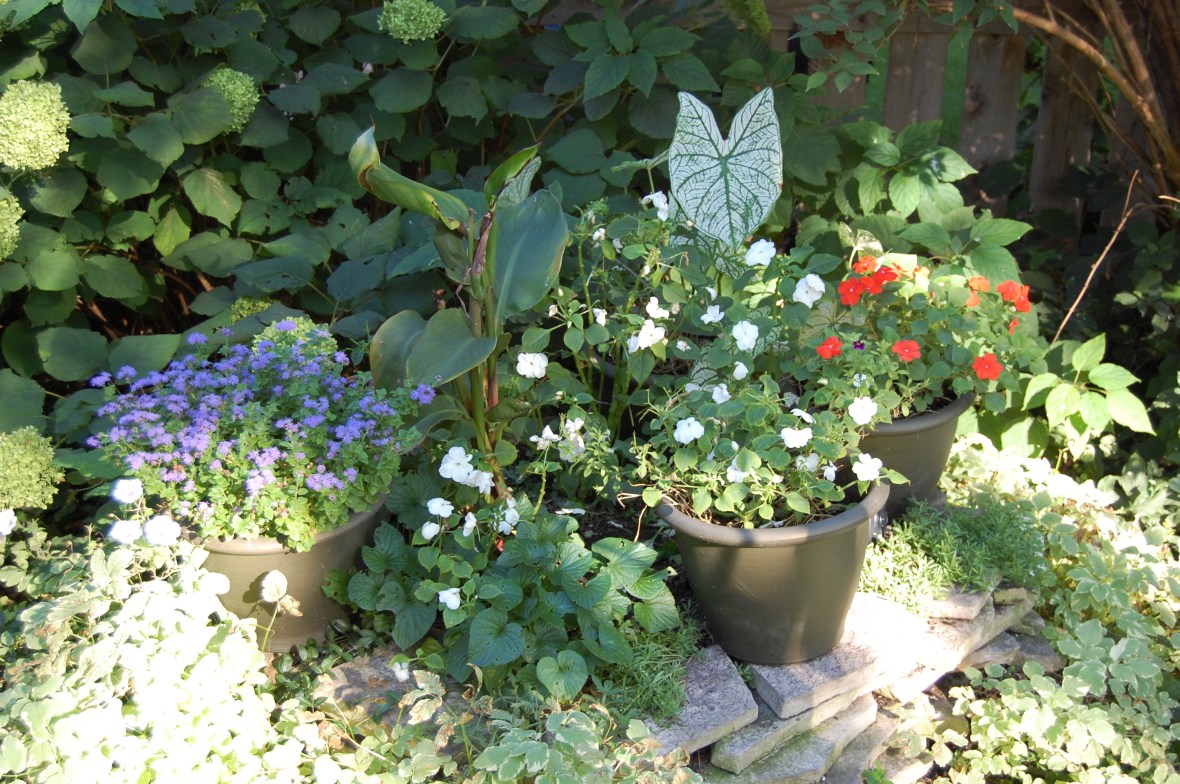
I forget what this variety is called, but I think I’ve decided I like these plain green and white Caladiums (Caladium bicolor) best. I built this raised bed on the stump of a tree we had to remove.
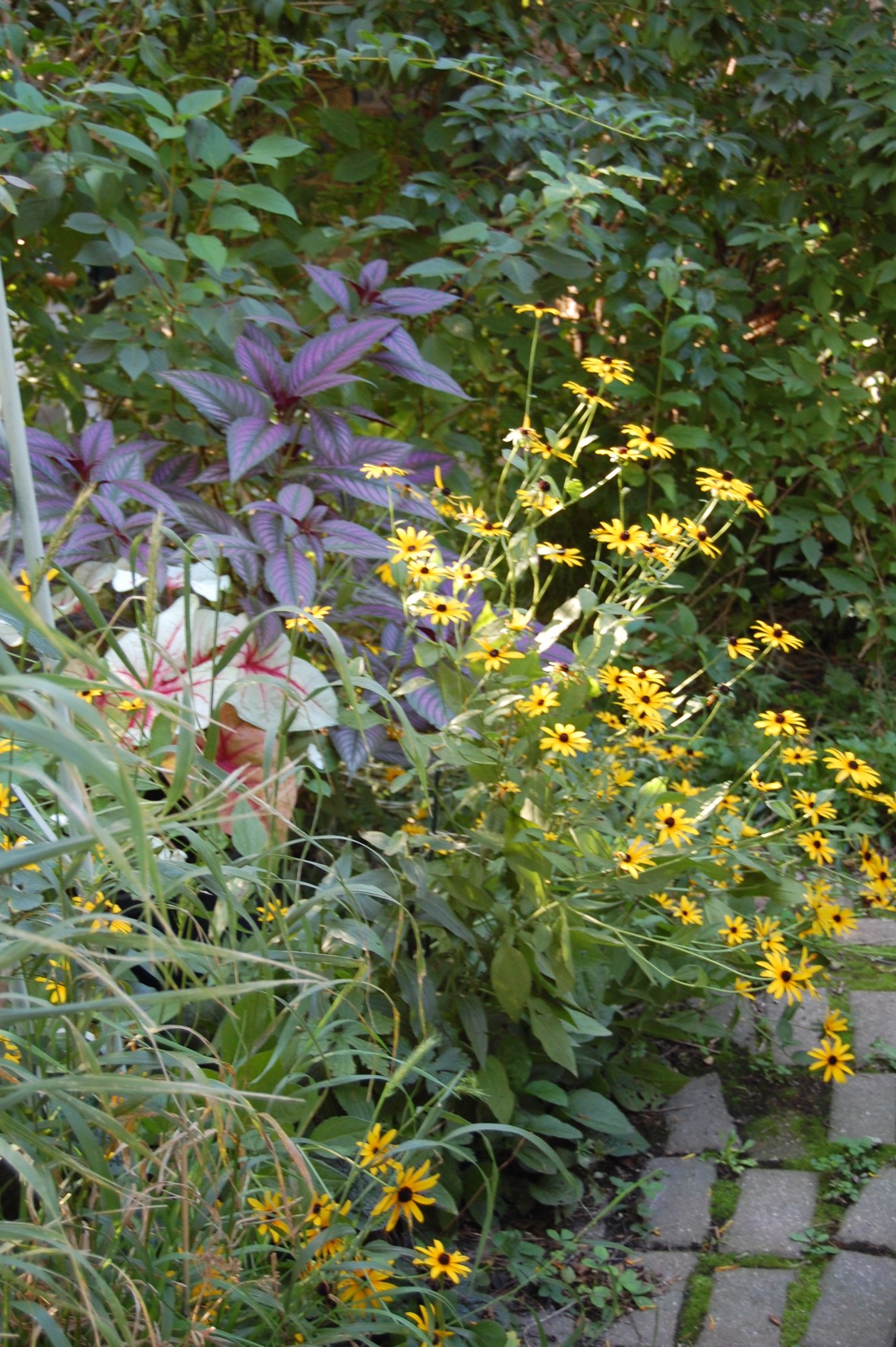
Persian Shield (Strobianthes dyerianus) is nice, but I don’t think I’ll grow it next year. Too dark for a shady yard.
The crabapples are like clusters of round rubies this year.

The Cup Plant (Silphium perfoliatum) has a long bloom period, but now the seeds are ripe, being eaten by goldfinches or dropping to the ground.

The Downy Sunflower (Helianthus mollis) had a disappointingly brief bloom period. They are joined by Joe Pye Weed ‘Gateway’ (Eupatorium maculatum).
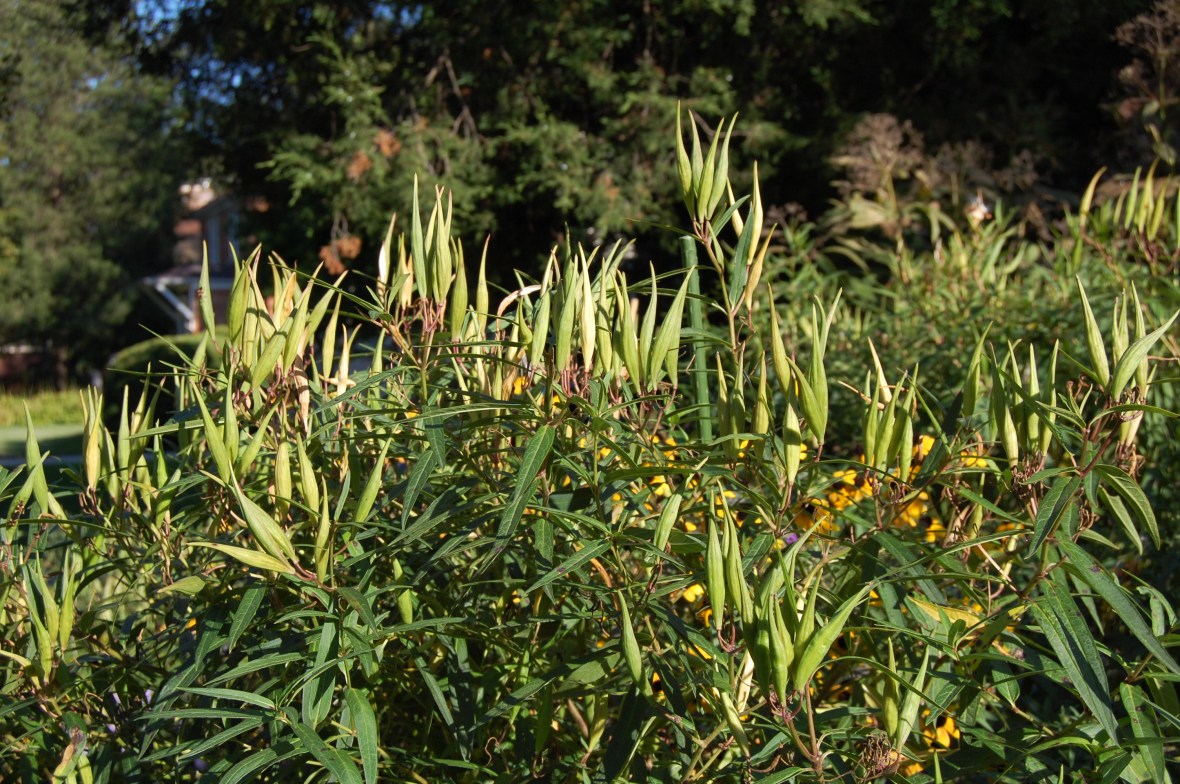
I like how the seed pods of Swamp Milkweed (Asclepias incarnata) point skywards.
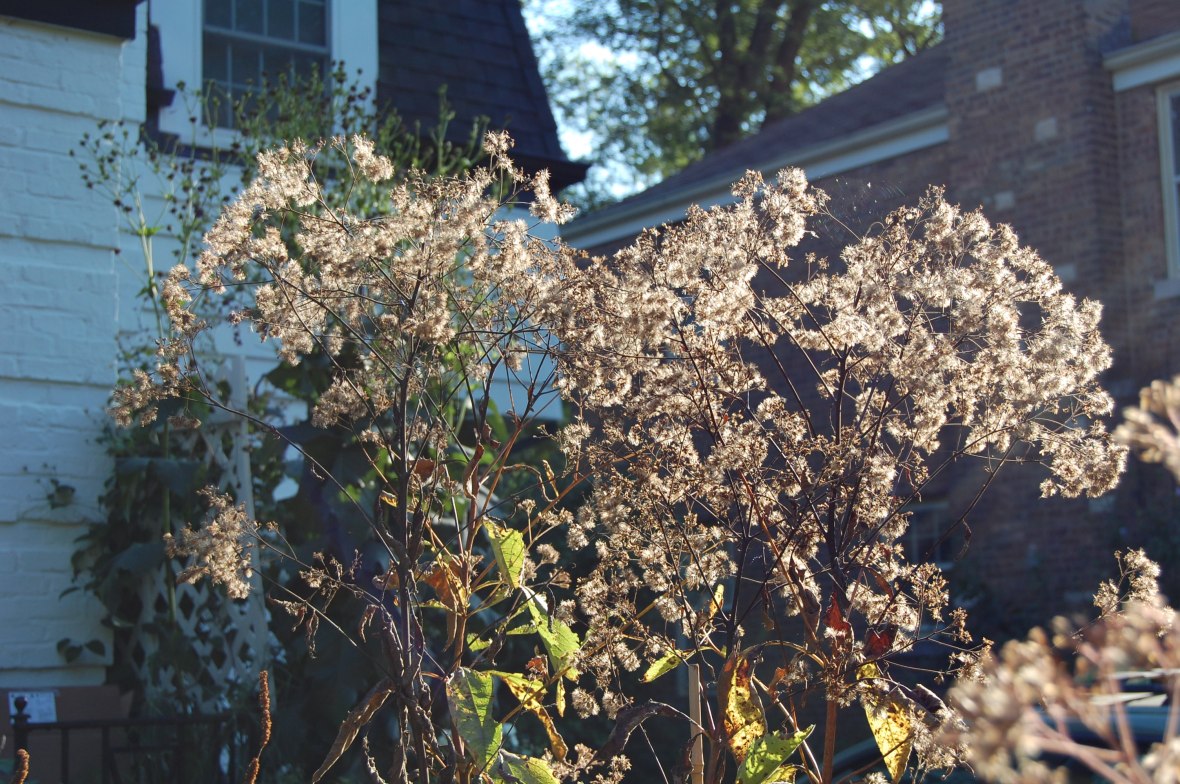
Sweet Joe Pye Weed (Eupatorium purpureum) has nice, fluffy seedheads.

Northern Sea Oats (Chasmanthium latifolium) have some of the most beautiful seedheads.

Switchgrass ‘Northwind’ (Panicum virgatum) seedheads have a different look, but in my opinion are even more beautiful. It also doesn’t flop.
And finally, another sign of fall: spiderweb in the Cup Plant.

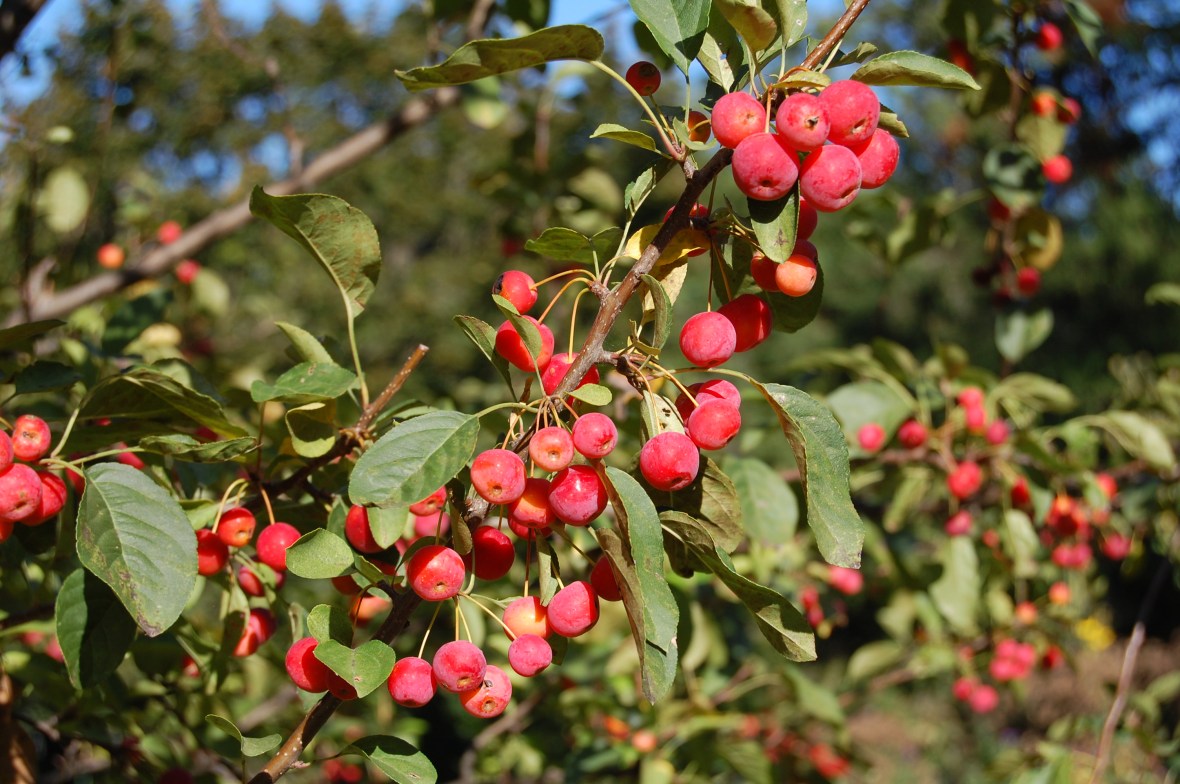
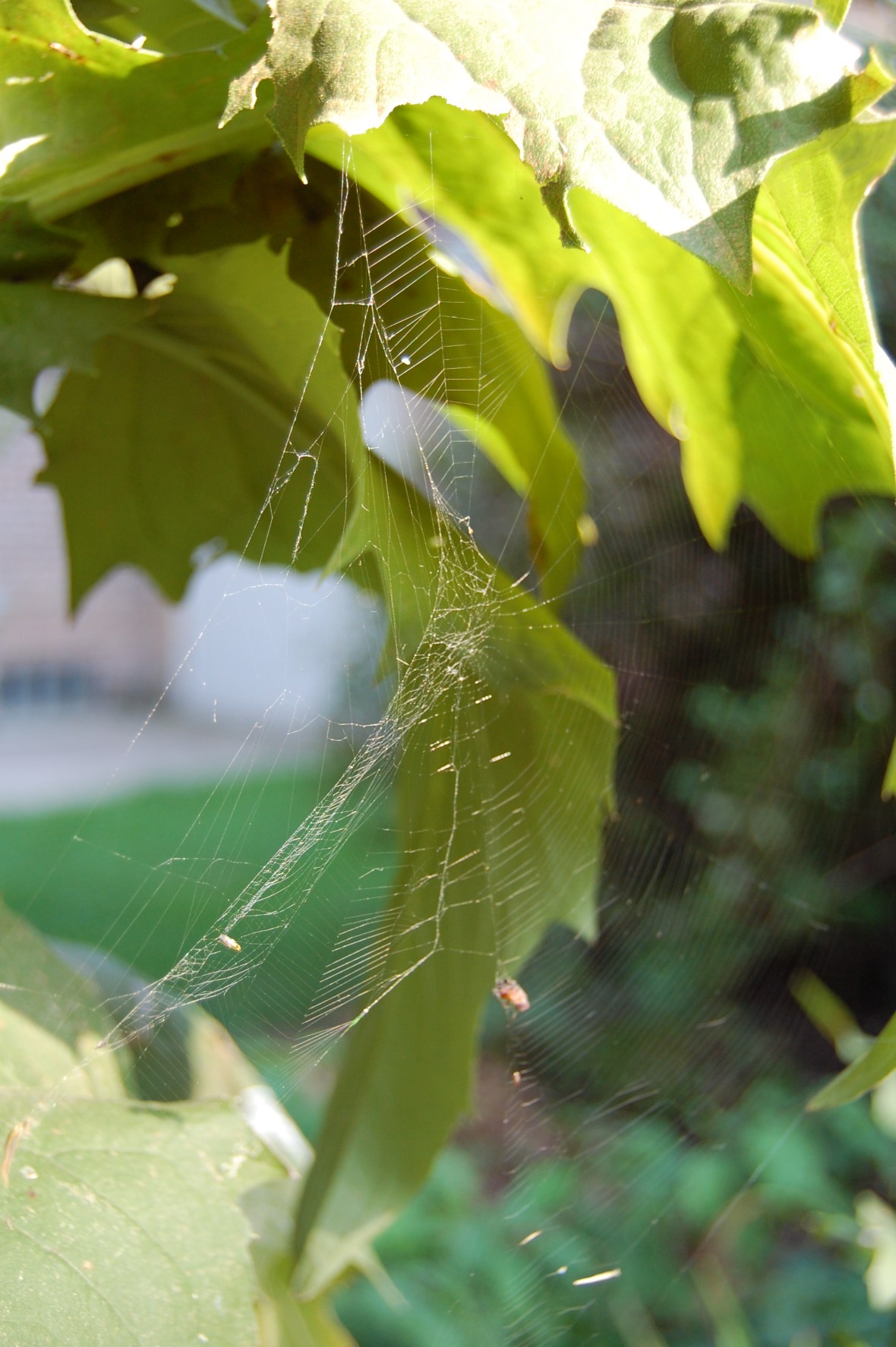




Love, love, love the Sea Oats! I remember seeing them on other blogs last year, too. I suppose they grow best in sun?
Actually, they do well in shade.
Fantastic seed pods on the Sea Oats and Swamp Milkweed. And there are suddenly spiders and webs all over the garden.
Sea Oats is a great plant, but best not to grow them in rich soil. They grow too tall and flop over.
Love the milkweed pointing to heaven, if you will. On the oats, aren’t you afraid of thick volunteers next spring?
That is a problem with Sea Oats. At a certain point I will cut off the seedheads, but that is hard to do because they are so pretty. The Sea Oats seedlings are tenacious little buggers.
The swamp milkweed must have been simply gorgeous in bloom!
Yes, I miss it. Also, If you get up close it has a nice vanilla fragrance.
Like your picture of the panicum. It’s one of those plants that look wonderful in person but are hard to photograph. I think the birds have already eaten all of the seeds in the coneflowers I have left up.
Thanks. You’re right, it’s difficult to get a picture of Panicum in bloom. Judy’s the photographer, I’m pretty useless with a camera.
Hi! I think the bed with Persian Shield looks great indeed, you should repeat it next year! I am a bit envious of your crabapples, mine aren’t so loaded! And the asclepias seed pods are fantastic!
I’ve read that crabapples have alternating years of heavy and sparse fruiting. Guess this my year for a bumper crop. Not that I pick them, the mostly get eaten by birds.
What a great picture of the spider web! I recently bought a Cup Plant with no clear understanding of how tall it could get. I think it is time to think about shifting it to a spot with more room for it to grow.
Yes, Cup Plant is not a plant to trifle with! You also have to be vigilant about seedlings, or it will take over your yard.
Hi Jason, I like plants that turn structural over the autumn and winter months such as Allium seed heads, sunflowers, grasses and honesty. It looks like you also have many plants that will do this and so provide some interest in the bare winter months – unless you cut them down – is that something you will do to prevent out-of-control self-seeding?